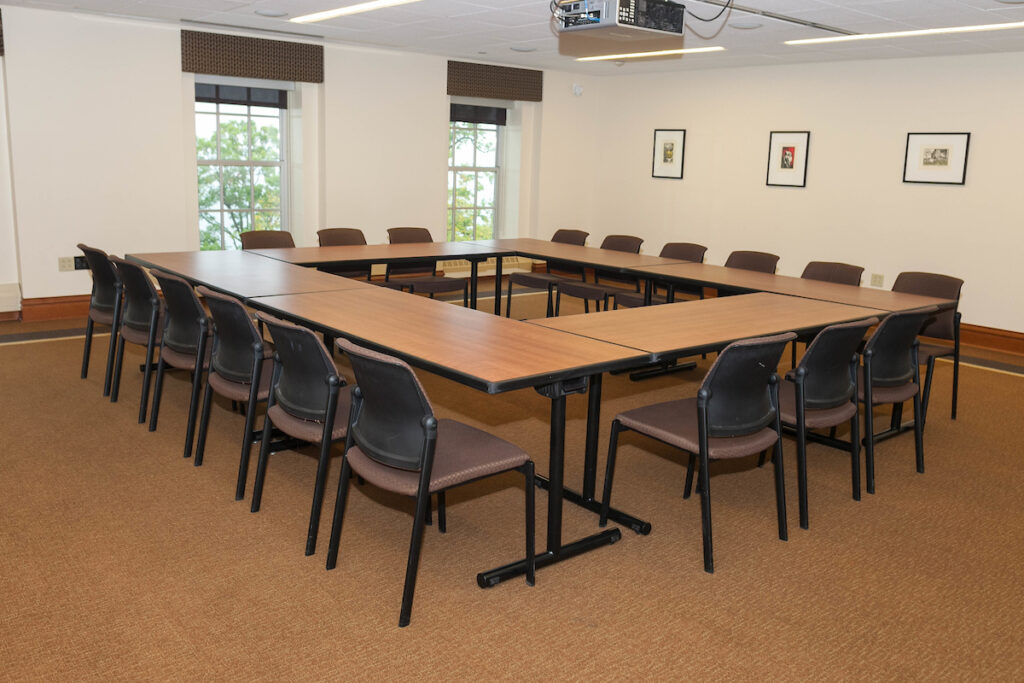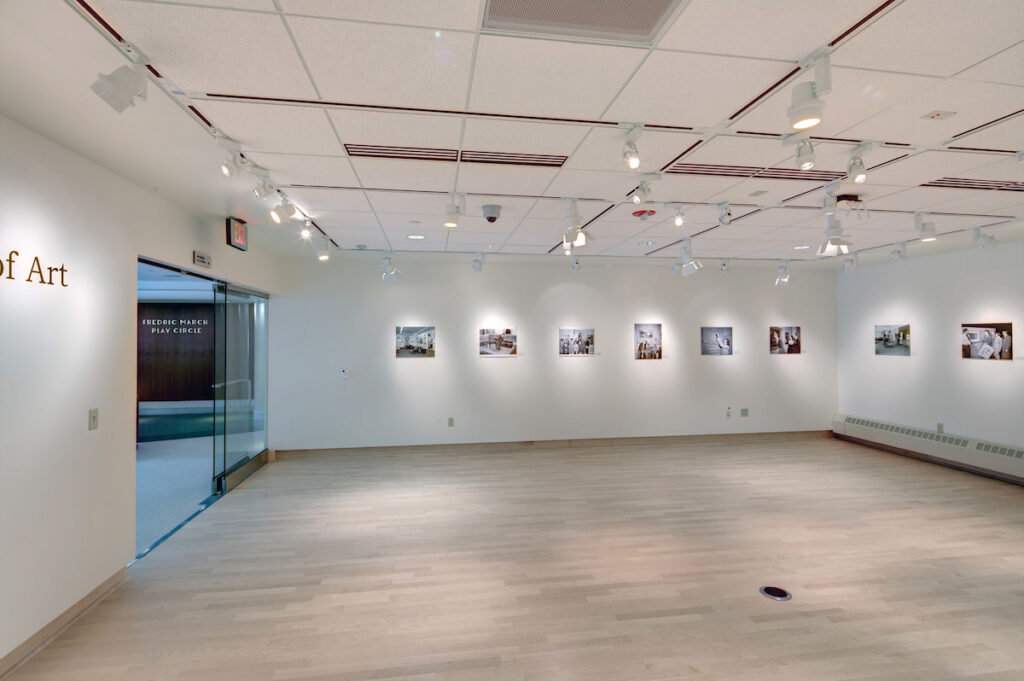We Heart Art at the Wisconsin Union
Artwork is all around you when you visit our buildings Memorial Union or Union South. When you look at a wall in one of our restaurants, study spots, hallways, meeting rooms, or galleries, there’s sure to be a work of art staring back at you. Unfortunately, our daily lives are so busy that we tend to take this art for granted, rather than take the time to appreciate all the little details in front of us.
The Wisconsin Union’s art displays fall into two categories: the permanent art collection, managed by Visual Arts and Art Collection Manager Robin Schmoldt, and the galleries managed by members of the Wisconsin Union Directorate (WUD) Art Committee. The permanent art collection has been growing since Memorial Union’s doors opened in 1928 and is now approximately 1,500 pieces strong. The temporary exhibitions typically are on display for four to six weeks with the exception of certain student artist and pop-up exhibitions.
We spoke with Robin Schmoldt and WUD Art Committee Director Rebecca Plier about their processes for selecting, curating and installing the permanent and temporary art collections at the Union. Read our conversation with these artistic individuals below, and keep their hard work in mind the next time you notice artwork on display in Memorial Union or Union South.
What are your role responsibilities?

Robin Schmoldt: As visual arts and art collection manager, I manage the selection and installation of works from the permanent collection, which are rotated on an occasional basis into the meeting rooms, hallways and offices of Memorial Union and Union South.
Rebecca Plier: Aside from attending meetings and doing administrative work for the committee, my duties as Art Committee director vary week to week and even day to day. Some weeks, I assist the committee and my associate directors with taking down or installing exhibitions, and others I brainstorm with committee members about future programming and collaborations we would like to pursue with other organizations. Mostly, I try to keep things running smoothly and make sure we all have a fulfilling experience.
What is the process like to select and install art pieces?
RS: All of the art in the permanent collection has Wisconsin at its roots, whether the artist was born here or has some significant tie to campus. We have to consider how users of a space will interact with the artwork and how often a space is trafficked to ensure that the work stays safe. Then, I treat each space as a mini gallery, trying to find themes so that the works within them have some cohesion. The beautiful thing about curation is that there are an infinite number of things that you can curate from—there’s a real art to actually curating the art.
RP: The Art Committee operates on a submissions-based system, meaning that we put out calls for artists to submit their work for exhibitions in our galleries, and then we select which ones we would like to work with. We don’t always curate the galleries ourselves; oftentimes, artists will come to us with a full gallery’s worth of work that we really love. Other times, such as when work for an exhibition comes from many different artists, the committee will work with a curator or a juror to assist with the organization.
Installation is done by committee members and led by our wonderful head preparators, who utilize a variety of tried-and-true methods to safely and beautifully display many kinds of artwork.
It sounds like there’s a lot of planning involved to think through every consideration.
RS: It’s a lot of fun, though. Our first Union director was very active in the Wisconsin art scene, so from the very concept of this organization, he wanted the visual arts to be a part of the everyday lives of our users. That’s why you see beautiful artwork in the spaces that students study and hang out in, so that it gets to be a part of that everyday experience.
How do you decide when it’s time to swap out the pieces in a certain space?
RS: It depends. We don’t want pieces to stay up for too long, because of exposure to light, so in an ideal world, it would be nice to change out pieces at least every six to 12 months. Some pieces are so beloved that they stay up most of the time. Every now and then, we refresh the artwork to surprise and delight our members and guests.
RP: Exhibitions typically stay in the galleries for about a month, but we may have more long-term exhibitions or even shorter pop-ups for as little as a week.
How do you acquire art pieces for the permanent and temporary displays?
RS: There are a few different ways to add pieces to the collection, but the annual Student Art Show is the most consistent way we acquire pieces, in which we purchase student artwork and cycle them into our collection. The beauty of purchasing student artwork is that it winds up becoming a time capsule of what was happening in contemporary art at any point in the almost-century that we’ve been collecting artwork.
Since there’s always cohesion through the artwork having Wisconsin roots in some way, it’s fun to see how you can hang pieces together and juxtapose them. A great example is Kurt Vonnegut’s “Welcome Home” print. Vonnegut isn’t from Wisconsin, but he was one of our most beloved WUD Distinguished Lecture Series (DLS) Committee lecturers. Late in his life, he got into printmaking, and we had the opportunity to purchase a print directly through him and his gallery representative. It hangs in one of our meeting rooms, right next to a piece that we bought from a Student Art Show. It’s beautiful to be able to do things like that.
RP: Lots of paperwork! Once the committee and the submitting artist(s) agree to have an exhibition, contracts are signed for use of the art in the galleries. Oftentimes, artists bring their work to the Union buildings for reception and installation by the committee.
Robin, what are some of your favorite pieces that are hanging on the walls right now?
RS: One of the pieces that people consistently cite as the piece they remember or love the most in our collection is Santos Zingale’s “The Terrace” painting, which hangs in our human resources office, because it’s such a welcoming image. For many folks entering the office, it might be their first interaction with us, and it’s important to have a piece that sparks joy.
There’s also another one outside of the HR office that’s called “Black Sheep,” and it’s interesting because it’s a completely black canvas, and you can only see the image when you look at the brushstrokes. It’s one of those pieces that really stays with people.
Rebecca, what are some of your favorite exhibitions that the Art Committee has curated?

RP: It’s really hard to choose, but I think my favorite is always the Student Art Show. I love that we center student art, and that it’s different each year, which grants the committee a lot of freedom for creativity. I also really enjoyed Nancy Mako’s “The Fragile Bee,” which is the first exhibition I remember seeing in the galleries as a freshman.
What do you think makes a powerful work of art?
RS: I think it’s when a piece sparks an emotional response. If art provokes a reaction, it’s doing its job. Sometimes, works invoke deep nostalgia for folks, or they inspire people to want to understand the technique behind it, like “Black Sheep.” Artwork that provokes some sort of emotional response or memory is when it’s at its best, and that’s different for every single person. Someone else might not enjoy a piece that I love, or it might not mean anything to them. That’s the real subjective nature of it.
RP: I think a powerful work of art is anything that moves people. Art is so multifaceted and so personal at the same time, which makes it hard to pinpoint exactly what it is that evokes such a response. I know that there are certain artworks that have changed the way I interact with the world, which is insane and wonderful. I really hope everyone can have that experience with art.
How do you feel that the artwork on the walls contributes to the atmosphere of Union South and Memorial Union?
RS: It brings life and vitality; it’s part of what gives our buildings their soul. The notion of artwork being part of the fabric of our buildings and a part of the everyday lives of individuals is incredibly immersive. You may walk past a painting a hundred times when you go to get coffee, and then there’s one time that you stop and stare at it and it transforms the day for you. I can’t imagine our buildings without artwork.
RP: The galleries in the Union buildings each have a very different vibe, and I think they all really brighten the atmospheres of Memorial Union and Union South, themselves. It’s so cool that we as students and community members have the opportunity to see free art galleries every day, and I often use these spaces for a much-needed midday break. In my experience, it is rare to find places of genuine quiet and beauty and passion in a college union, and I know I can always rely on the galleries to provide that. The work can also provoke discussion and create greater dialogues on a variety of topics, which is another essential aspect of a student union.
Are there any upcoming exhibitions that our readers should keep an eye out for?
RP: Yes! Each gallery will host a part of UW-Madison alumni print exhibitions as a part of the Southern Graphics Council International conference, and that will open on Feb. 11. Later in the spring, we will host our 94th annual Student Art Show, which will feature works from UW-Madison students.
Is there anything else you’d like to share?
RP: The WUD Art Committee is always looking for more awesome members! No knowledge of gallery practices is needed, just an interest in art. We are first and foremost a community of people who love to geek out about art, among many other things.
Thank you to Robin Schmoldt and Rebecca Plier for sharing their artistic insight with all of us. You can visit Memorial Union and Union South to see this wonderful artwork for yourself, and you can learn more about the WUD Art Committee here.
